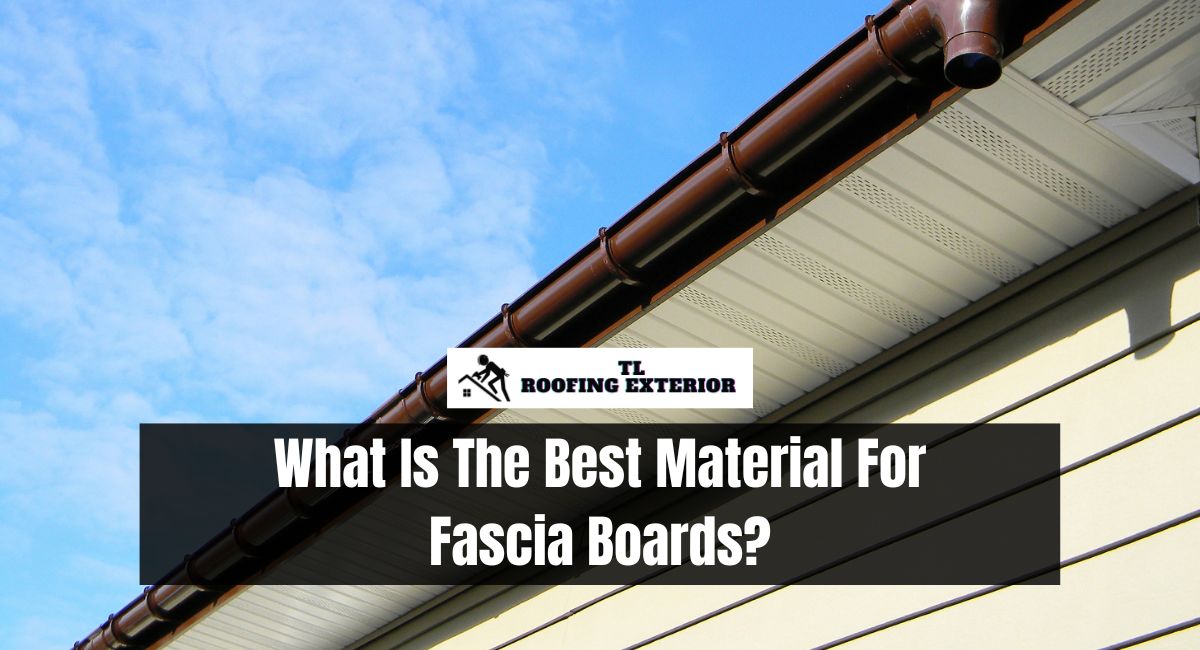The architectural integrity and aesthetic appeal of a building often lie in the details, and fascia boards are a prime example. These boards, running along the lower edge of the roof, play a crucial role in both the functional and visual aspects of a structure.
With a range of materials available in the market, the question arises: Which is the best material for fascia boards that strikes a balance between durability, maintenance, and aesthetics?
This article delves into the various options, weighing their pros and cons to guide homeowners and builders in their selection.
What Is The Best Material For Fascia Boards?
Fascia boards are an integral part of a home’s roofing system, serving both aesthetic and functional purposes. They create a barrier between the roof edge and the outdoors and provide a surface for the gutters to attach.
When selecting the best material for fascia boards, it’s essential to consider durability, maintenance, cost, and aesthetics. Here are some of the most commonly used materials for fascia boards:
1. Wood
- Types: Common types include cedar, redwood, and pine.
- Pros: Natural look, can be painted or stained to match any home exterior.
- Cons: Requires regular maintenance to prevent rot, warping, and insect damage. It’s susceptible to moisture and can deteriorate if not properly maintained.
2. Vinyl
- Pros: Low maintenance, resistant to rot and insect damage, cost-effective, and available in various colors.
- Cons: Can become brittle and crack in extremely cold temperatures, might fade over time, and doesn’t have the natural look of wood.
3. Aluminum
- Pros: Durable, low maintenance, resistant to rot and insect damage, available in a variety of colors, and can be painted.
- Cons: It can dent easily, might not be as aesthetically pleasing as wood, and can corrode if the paint or finish is compromised.
4. Composite
- Types: Made from a combination of wood fibers and plastic.
- Pros: Combines the look of wood with the durability of plastic, is resistant to rot and insect damage, and requires less maintenance than natural wood.
- Cons: More expensive than some other options and can be heavier than wood or vinyl.
5. PVC (Polyvinyl Chloride)
- Pros: Highly durable, resistant to rot, insects, and UV rays, low maintenance, and can be painted.
- Cons: More expensive than vinyl or aluminum, can expand and contract with temperature changes and doesn’t have the natural look of wood.
6. Fiber Cement
- Pros: Resistant to rot, fire, and termites, can mimic the appearance of natural wood, and is durable.
- Cons: Heavy, requires special tools for installation, and can be more expensive than some other options.
7. Steel
- Pros: Extremely durable, resistant to rot and insect damage, and can be painted.
- Cons: It can be more expensive than aluminum or vinyl, can rust if the paint or finish is compromised, and is heavier than other materials.
The best material for fascia boards largely depends on the homeowner’s specific needs, the climate, and the desired appearance. Materials like PVC, aluminum, or composite might be best for those looking for longevity and minimal maintenance.
However, cedar or redwood can be ideal for homeowners who prioritize aesthetics and the natural look of wood, provided they are ready for the associated maintenance.
It’s essential to weigh the pros and cons of each material in the context of the home’s location, design, and the homeowner’s budget and maintenance preferences.
What Is The Best Choice For Fascia Board?
The best choice for a fascia board largely depends on the desired aesthetics, budget, and maintenance preference. Cedar is a popular natural wood option due to its durability and resistance to rot. PVC or vinyl fascia boards are low-maintenance, resistant to rot and insects, and don’t require painting.
Aluminum fascia is durable, weather-resistant, and can be painted to match your home. Composite boards, made from wood fibers and plastic, combine the look of wood with increased durability and resistance to elements. Each material has its advantages, so consider your specific needs and preferences.
What Is The Most Durable Fascia?
The most durable fascia material is often PVC or vinyl. PVC fascia boards are resistant to rot, insects, and weathering, and they don’t warp or require painting. This low-maintenance option retains its appearance for years without the need for frequent upkeep.
Aluminum is another durable choice, especially when coated to prevent corrosion. While natural wood can be durable, especially cedar, but generally requires more maintenance to prevent rot and weathering than PVC or aluminum.
Is PVC Fascia Better Than Wood?
PVC fascia offers several advantages over wood:
- Durability: PVC is resistant to rot, insects, and warping.
- Maintenance: PVC doesn’t require painting or sealing and is easier to maintain.
- Consistent Appearance: PVC retains its color and doesn’t weather like wood.
- Moisture Resistance: Ideal for damp climates, PVC doesn’t absorb water.
However, wood, especially types like cedar, offers a natural aesthetic that some homeowners prefer. While wood can be long-lasting, it generally requires more maintenance and protection from the elements than PVC.
Bottom Line
When it comes to fascia boards, there isn’t a one-size-fits-all answer. Materials like wood, PVC, aluminum, and composite each come with their unique benefits and challenges. While wood offers a classic look, it may require more maintenance against rot and pests.
On the other hand, PVC and aluminum offer durability with minimal upkeep but might not provide the same aesthetic appeal as wood. Composite materials attempt to bridge the gap, offering a blend of durability and visual appeal.
The best material for fascia boards ultimately depends on the project’s specific needs, local climate conditions, and personal preferences regarding maintenance and aesthetics.
Also read: What Are The Problems With Metal Roofs?
